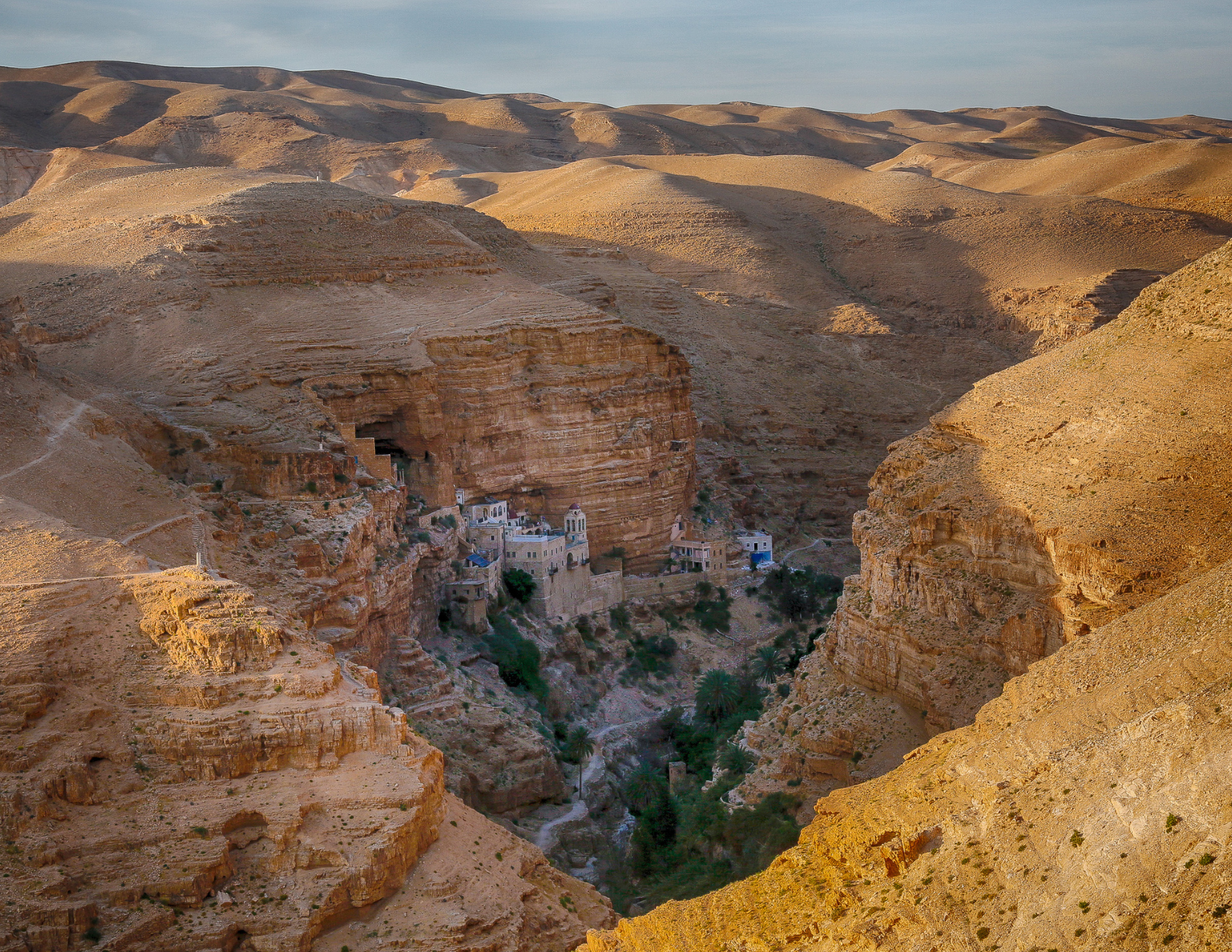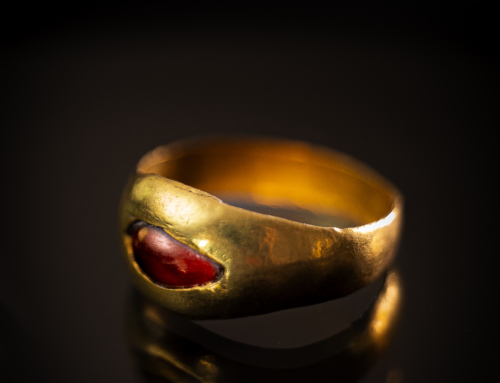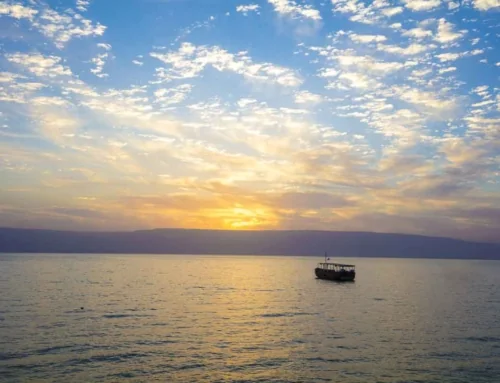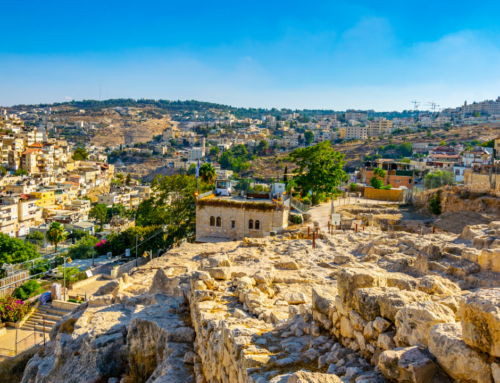St. George’s Monastery’s Biblical Significance
St. George’s Monastery is located in Wadi Qelt in the Judean desert. It is a stunning site that holds religious significance with views that will transport you back to the 5th century. The monks of the Judean desert were part of the Christian ascetic tradition that thrived in the wilderness during the Byzantine era. The monks were known for their strict vows, discipline, solitude, and devotion to God. They are also called Hermits which come from the Latin word that indicates “of the desert.”
The Judean desert is a harsh terrain, nonetheless, the monks chose this strict way of life which they believed is rooted in the teachings of Jesus. They followed the example of Jesus who went to the desert for forty days (Matthew 4:1-11, Luke 4:1-13) as well as John the Baptist and the prophet Elijah.
The monastery is also located along the historic road between Jericho and Jerusalem which is mentioned in the story of the Good Samaritan (Luke 10:29–37). Moreover, the way leading to the monastery is believed to be the “valley of the shadow of death” mentioned in Psalm 23.
The Monastery’s History
The history of St. George’s Monastery is a fascinating tale of dedication, perseverance, and faith. The monastery was founded in the 5th century by a group of monks who had settled around the cave where they believed the prophet Elijah was fed by ravens. The monastery is named after St. George of Koziba who came to the monastery to live as a hermit in the 6th century.
The monks dedicated themselves to a life of prayer, solitude, and service to God. They built their monastery into the side of a cliff, using the natural rock formations to create a series of chambers, chapels, and living quarters. The exterior of the monastery was designed to blend seamlessly into the surrounding rock face, creating a natural camouflage that helped to protect the monks from outside threats.
Over the centuries, the monastery has been subjected to numerous attacks and has been rebuilt several times. In the 6th century, the Persians destroyed the monastery during their invasion of the Holy Land. In the 7th century, it was once again destroyed during conquests of the region.
During the Crusader period, the monastery was renovated and expanded. The Crusaders also constructed a series of underground tunnels and caves beneath the monastery. The monastery was renovated once again in the 19th by the Greek Orthodox Church.
Visiting the Monastery
The monastery has remained a place of refuge and solitude for monks for almost two thousand years. It is a symbol of the unwavering dedication to God and the power of faith of the monks who built it. The monastery’s interior is decorated with beautiful frescoes and mosaics that depict scenes from the life of Jesus and other religious figures. The monastery consists of Elijah’s cave, a church and chapel, underground tunnels, and small farming grounds. The underground tunnels and caves that lie beneath the monastery were used by the monks as a means of escape during times of persecution, and they are a reminder of the sacrifices that have been made to preserve their faith.
Today, St. George’s Monastery is home to a small community of Greek Orthodox Monks. It is also a place of pilgrimage and visitors can explore the monastery, experience the unique atmosphere of this ancient site, and enjoy the breathtaking desert landscape.
Curious about this off-the-beaten-path site? Contact our team to start planning today!
*Please note that this remote location also includes a short hike. For those who are unable to hike, there is a viewpoint that allows you to admire the complex structure and tradition of the monastery.







